Zhangjiajie City is situated in the northwest of Hunan Province, about 400km away from Changsha City. It’s composed of four regions, Yongding District, Wulingyuan District, Cili County, and Sangzhi County, respectively. Wulingyuan Scenic Area, where all the famous and significant attractions are situated, is located in the Wulingyuan district.
Famous for the natural scenery, Zhangjiajie city is a perfect place for visitors seeking natural wonders. The humid semi-tropical climate of Zhangjiajie has granted these scenic areas with various kinds of vegetation, animals, caves, and rivers. In the city, there are over 300 scenic spots, including Zhangjiajie National Forest Park, grandiose Suoxiyu Nature Reserve, oddly-shaped Tianzi Mountain, magnificent Tianmen Mountain, splendid Zhangjiajie Grand Canyon (Zhangjiajie Grand Canyon Glass Bridge is the world's longest and highest glass bridge), and Yangjiajie Scenic Area.
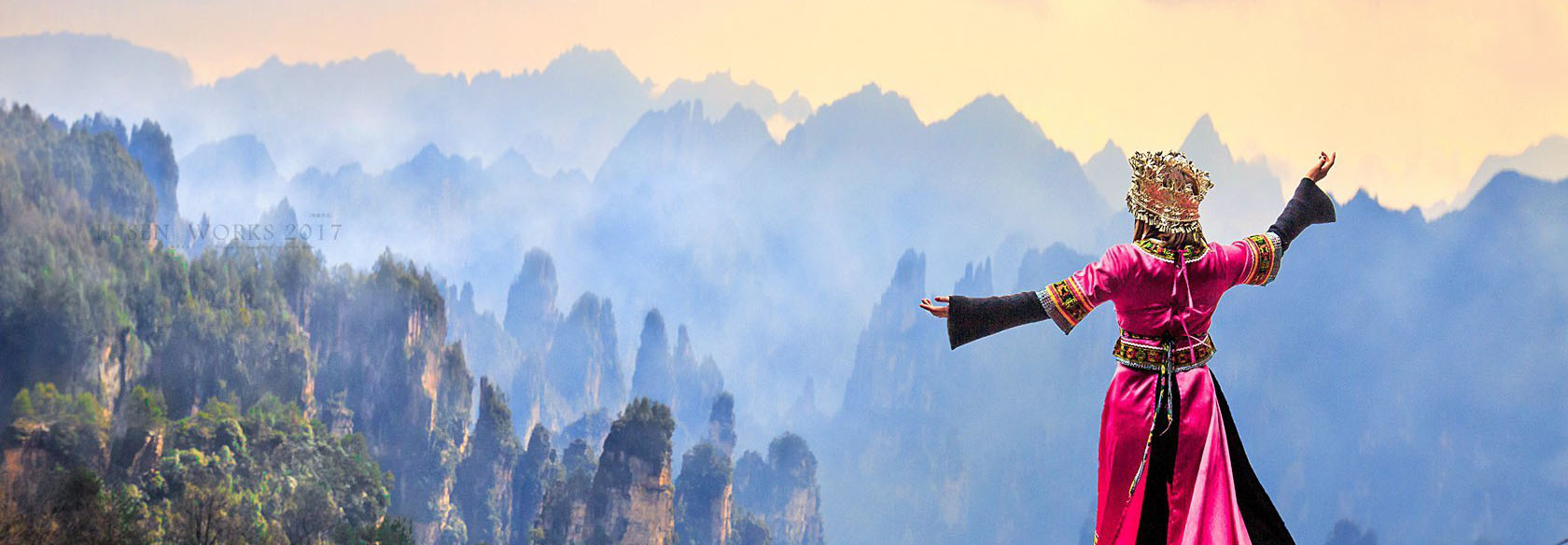
Besides, several minority groups are living here harmoniously with nature, including Tujia, Miao, and Bai. Most of these people are no different from the Han people in other places. Some are still living in a traditional style of producing rice, cotton, and tea and preserving their primitive and simple folk customs and rich ethnic culture.
Spring and Autumn are the best seasons to visit Zhangjiajie. During Spring, all the fresh and fragrant trees, grass and flowers are alive again, adding more charm to the already scenic Wulingyuan area. While in Autumn, Zhangjiajie has more pleasant and comfortable weather, and many seasonal fruits like kiwi and tangerine are ripening. Nevertheless, Summer is hot and humid in Zhangjiajie while Winter is too cold. Therefore, plan your Zhangjiajie tour in Spring or Autumn.
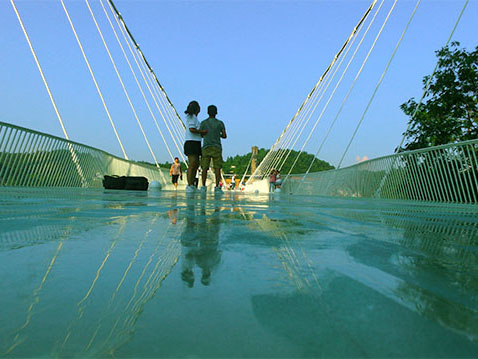 Most attractions in Zhangjiajie are located in the Wulingyuan area, which is about 35km from Zhangjiajie city; the temperature of those scenic spots is lower compared to other regions.
Most attractions in Zhangjiajie are located in the Wulingyuan area, which is about 35km from Zhangjiajie city; the temperature of those scenic spots is lower compared to other regions. 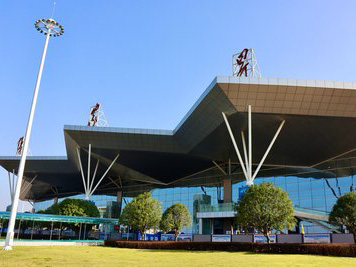 Currently, it has direct flights connecting cities like Beijing, Shanghai, Taipei, Shenzhen, Chongqing, Hangzhou, Changsha, Guangzhou, Xi'an, Chengdu, Nanjing Busan, and Changzhou.
Currently, it has direct flights connecting cities like Beijing, Shanghai, Taipei, Shenzhen, Chongqing, Hangzhou, Changsha, Guangzhou, Xi'an, Chengdu, Nanjing Busan, and Changzhou.
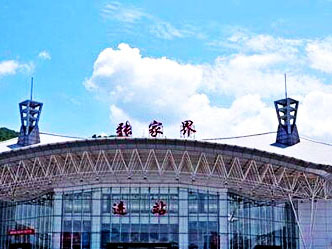
It’s a regular train station connecting Zhangjiajie and Beijing, Shanghai, Guangzhou, Shenzhen, Changsha, Nanning, Guiyang, and other cities in China. When you arrive at the Zhangjiajie Railway Station, you just need to walk for a few minutes left to the Zhangjiajie Bus Terminal to take the bus to the Wulingyuan scenic areas. It can be time-consuming to take the train if you only have a few days to tour Zhangjiajie.
City bus: Zhangjiajie city is quite small, and there are only ten bus lines in the city areas. Bus No.4 passes Zhangjiajie Hehua International Airport; Bus No.5 and 6 pass by the Zhangjiajie Railway Station and the bus terminal; and the bus No.10 passes by Cable Car Station of Tianmen Mountain and Tujia Folk Garden. There is no city bus connecting the city and the Zhangjiajie National Forest Park. You need to go to Zhangjiajie Bus Terminal and take the bus there.
Taxi: The flag-down fare of the Zhangjiajie taxi is 5RMB/1.6km, and it charges 1.6RMB/km for a journey within 1.6-10km, and 3.2RMB/km if your journey exceeds 10km. As most people come to Zhangjiajie to enjoy the beautiful sights in the Wulingyuan area, it's cost-efficient to have a charted car, which is about 100 RMB.
Tip: many local taxi drivers may rip you off if you don't know the route. Remember to do your research beforehand and ask for the bill.
Located in the southern part of the Wulingyuan Scenic Zone, next 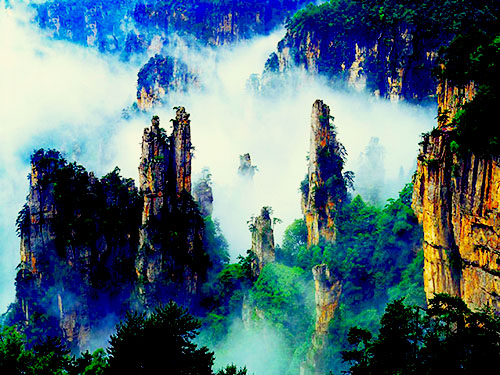 to Suoxiyu Valley and Tianzi Mountain, Zhangjiajie National Forest Park is a national-level forest park in China and the highlight of the beautiful Wulingyuan Scenic Area. With characteristic peaks, peaceful streams, and magnificent trees, the Zhangjiajie National Forest Park hosts countless fauna, such as Dove tree, pulse, orchid, and floras like Golden Pheasant, Rhesus Monkey, Giant Salamander, and Musk Deer. As for water, you can enjoy the Golden Whip Stream. It’s also well-known for the pristine water; you may wander among the verdant plants and have a quiet time in the valley.
to Suoxiyu Valley and Tianzi Mountain, Zhangjiajie National Forest Park is a national-level forest park in China and the highlight of the beautiful Wulingyuan Scenic Area. With characteristic peaks, peaceful streams, and magnificent trees, the Zhangjiajie National Forest Park hosts countless fauna, such as Dove tree, pulse, orchid, and floras like Golden Pheasant, Rhesus Monkey, Giant Salamander, and Musk Deer. As for water, you can enjoy the Golden Whip Stream. It’s also well-known for the pristine water; you may wander among the verdant plants and have a quiet time in the valley.

Tianzi Mountain Nature Reserve is one of the four famous scenic spots in Wulingyuan Scenic Zone (the other three include Zhangjiajie National Forest Park, Suoxi Valley Nature Reserve, and Yangjiajie Scenic Area). The name "Tianzi (son of the heaven)" is named after a man named Xiang Dakun who had led an uprising in the Southern Song Dynasty (1127 -1279) and claimed himself the “Tianzi." The scenic spot prides itself on odd-shaped peaks and mysterious mist. Riding on a cable car, you can reach the top of the peak and enjoy the panoramic view of the surrounding mountains and valleys.

hailed as the "Soul of Wuling." It is covered with well-preserved forests, rare plants and species, and eccentric bonsai, displaying a fairyland under the heaven. There are two particular sights you must see in Tianmen Mountain - the Tianmen Cave and Heaven-linking Avenue. The Tianmen Cave is said to connect the heavenly gate, and it takes 999 stairs to get there from the platform, and the Heaven-linking Avenue is an 11km long, steep winding mountain road which you can either take a bus or ride a bike. If you are not a fan of exercise, you can always take the Tianmenshan Mountain Cableway - the third wonder to enjoy the ever-changing mountain view and landscapes.
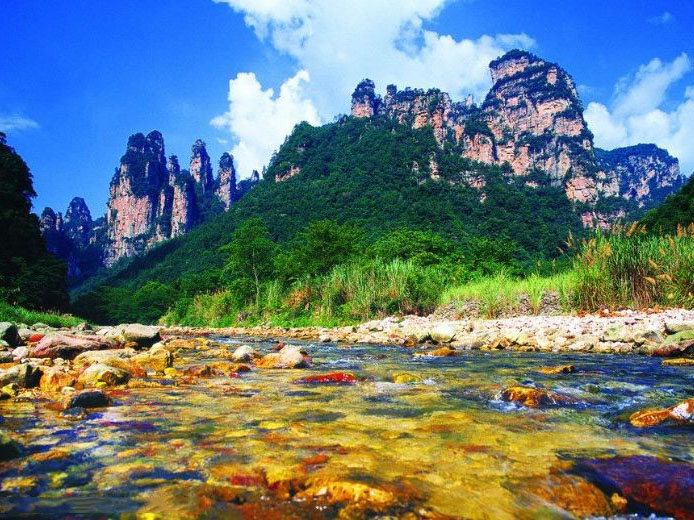 the Suoxi Valley is the largest in the area. Like other great scenic spots in Zhangjiajie, the Suoxi Valley is also a place hosting grotesque peaks, various plants, and rare species. However, it has more streams, karst caves, and narrow gorges.
the Suoxi Valley is the largest in the area. Like other great scenic spots in Zhangjiajie, the Suoxi Valley is also a place hosting grotesque peaks, various plants, and rare species. However, it has more streams, karst caves, and narrow gorges.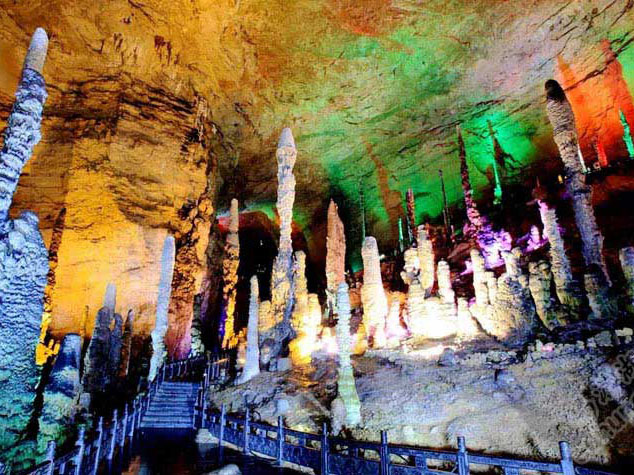 the Zhangjiajie Wulingyuan Scenic Area. It was praised as the "All-around Champion Karst Cave in the World."
the Zhangjiajie Wulingyuan Scenic Area. It was praised as the "All-around Champion Karst Cave in the World." 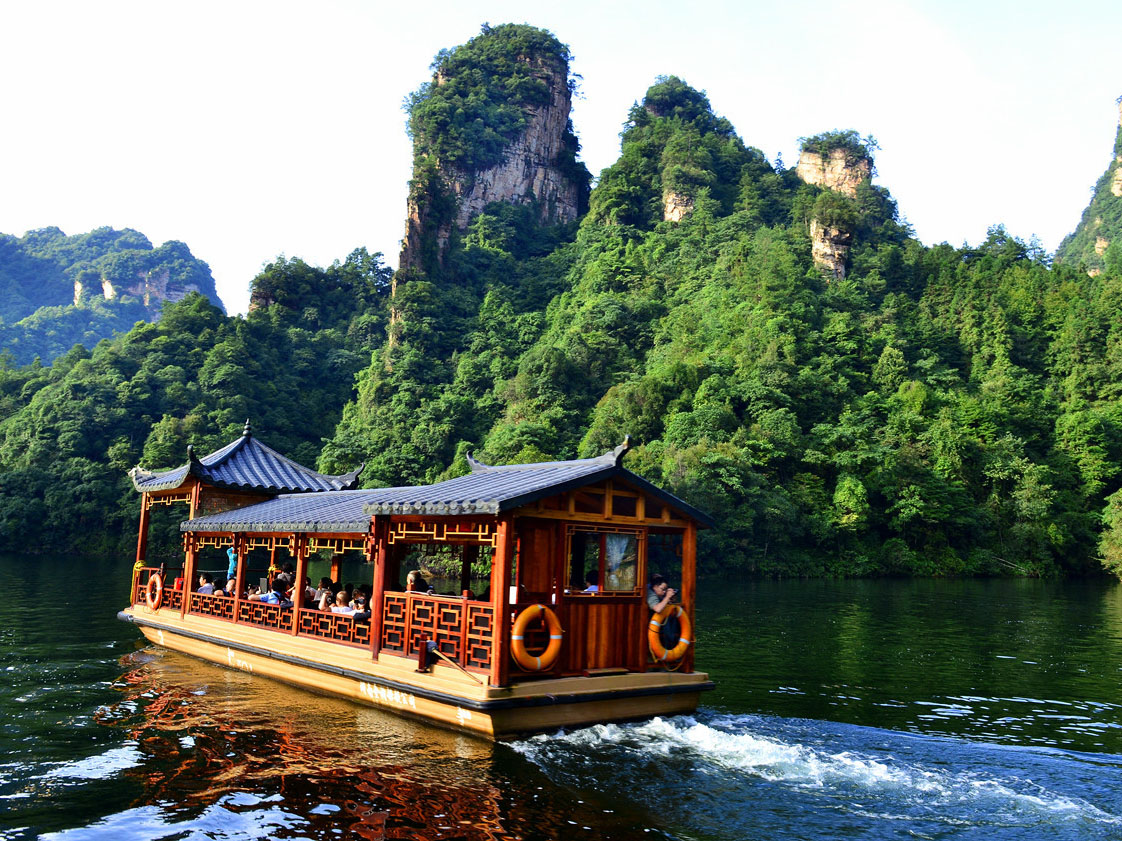
7 days Fenghuang - Zhangjiajie - Avatar Trip
4 days Shanghai -Zhangjiajie Trip
Copyright © 2019 Lily Sun China Tours International, Inc. Terms &conditions | Privacy Policy | Sitemap